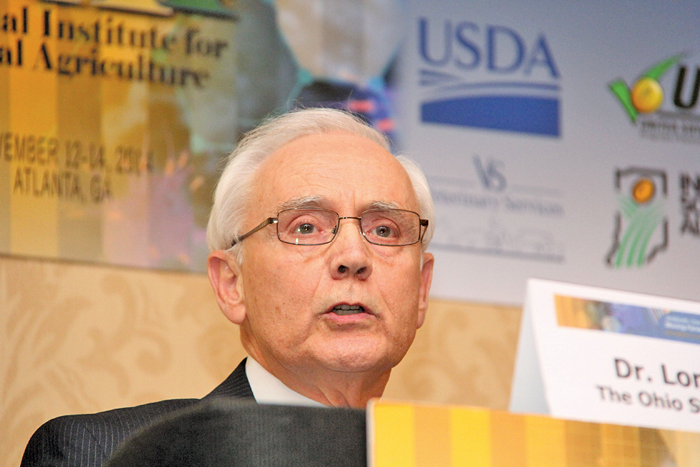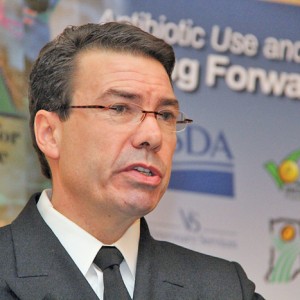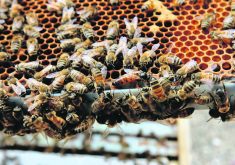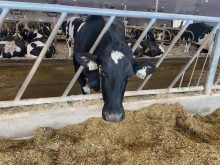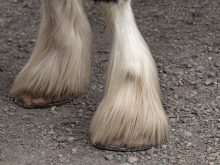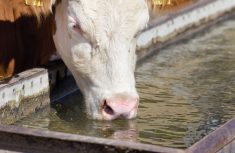It’s a microscopic problem with huge repercussions, repercussions that could end a way of life humans have enjoyed for seven decades.
Experts say that antibiotic resistance is on the rise, including resistance to antibiotics important to human health.
“It is indeed a crisis, the evolution of antibiotic resistance is occurring at an alarming rate, outpacing the development of new counter measures,” Dr. Lonnie King told those gathered at the National Institute for Animal Agriculture’s symposium on antibiotic use and resistance, held last week in Atlanta, Georgia.
Read Also
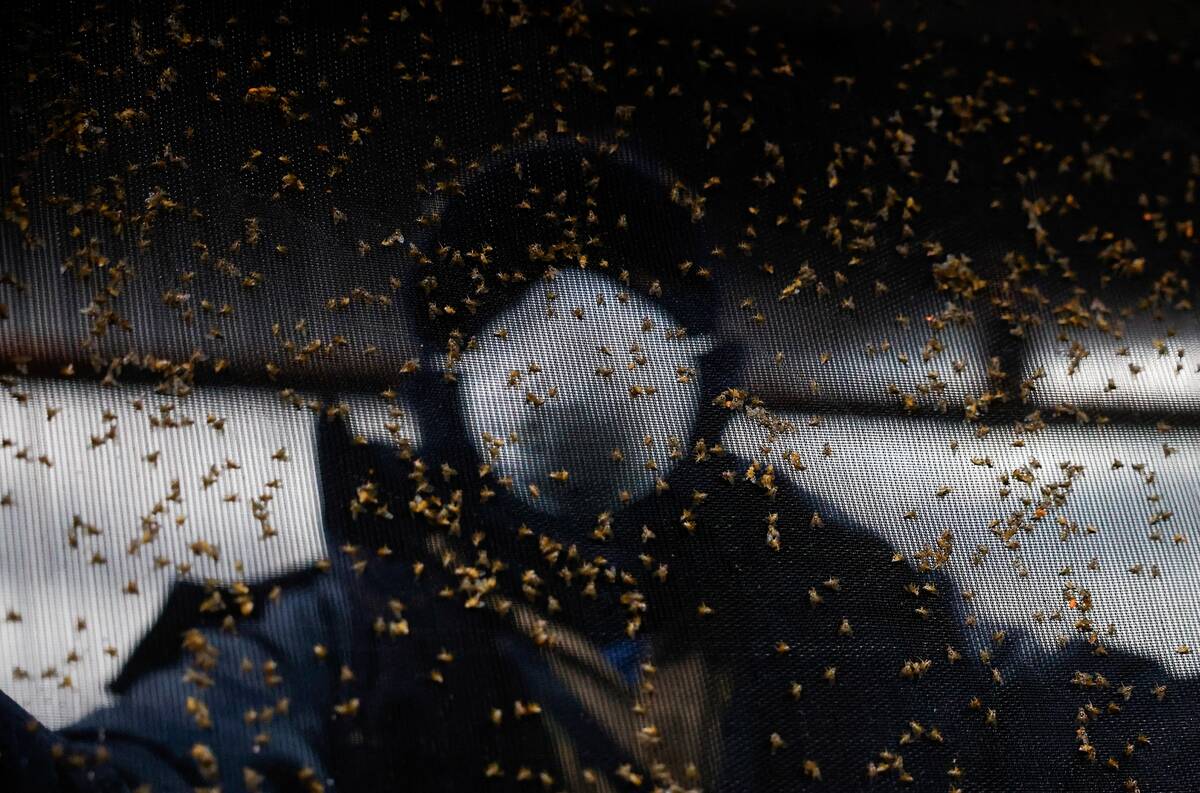
Canada too cold for New World screwworm
New World screwworm is closing in on the U.S. from Mexico, but the deadly livestock parasite isn’t likely to dig a surviving population in Canada, even if the fly species sneaks over the border.
“The situation really threatens patient care, economic growth, public health, agriculture, economic security and national security — I think that is the definition of a crisis,” added the current head of veterinary medicine at Ohio State University and former director of the U.S.’s National Centre for Zoonotic, Vector-Borne and Enteric Disease.
Contributors
It’s clear that practices used in both human health care and veterinary medicine have contributed to the current situation, but progress towards preventing both the spread and development of antibiotic-resistant organisms requires everyone to be at the table, including farmers, consumers, business and government, he said.
“This isn’t about what happened in the past, who’s right, who’s wrong… it is about this day forward,” said King, adding that there is a “positive and essential role for animal agriculture as part of a national conversation and national strategy.”
Others also stressed the need for inclusive dialogue.
“We know that preventing the spread of animal antibiotic resistance can only be achieved with widespread engagement,” said Dr. Christopher Braden of the U.S. Center for Disease Control.
But while a wide variety of stakeholders was on hand for discussions, it was clear that not everyone defines the problem in the same way. Which programs have been successful, where money should be spent and how sustainable should be defined were all debated — sometimes hotly.
However, participants noted that this meeting — the third one of its kind to be held in the U.S. — was far more collaborative and less polarized than previous gatherings, as doctors, veterinarians and major livestock producers and processors looked at ways of reducing antibiotic use and resistance.
More polarized
The same cannot be said of the situation north of the border, said Dr. David Leger, a veterinary epidemiologist with the Public Health Agency of Canada.
“I would say in Canada we’re still at a little bit more of the polarized phase of that relationship, given some of the articles in recent years by the Canadian Medical Association Journal… so we do know we need to get ourselves in the same room and have some of these discussions,” he said.
But in the long run, North America likely won’t be the biggest concern when it comes to antibiotic resistance.
“Think what’s going to happen in the developing world, think what happens when we all of a sudden raise 20 billion more food animals internationally,” said King, adding that those animals are going to be raised in parts of the world that lack basic health care and infrastructure, but have access to over-the-counter and even counterfeit drugs.
Worse yet, many substandard antibiotics have been found in these locations, drugs which have low levels of effective ingredients and can more rapidly create resistant organisms.
“I think this is an emerging crisis internationally, and especially in animal agriculture — so it’s something that you want to pay attention to,” he said.
An increase in animal production in developing areas of the planet will also mean more animal transportation and the possibility that existing antibiotic-resistant organisms will be spread.
Travelling bugs
It’s a major concern for Dr. Tom Chiller, a medical doctor with the American Center for Disease Control and Prevention and former chief of the National Antimicrobial Resistance Monitoring System for Enteric Bacteria.
“It is very easy for bugs and resistant bugs to travel,” he said. “They disseminate using lots of different mechanisms, hospitals are one, getting on airplanes and flying is another and certainly looking at the food supply, and animal agriculture and husbandry and seeing how food and food imports and exports move is just dramatic, it certainly makes sense that, that would be a wonderful system to transmit not just antibiotic resistance, but infections in general.”
The recent Ebola outbreak in West Africa should serve as a potent reminder of how easily disease can spread, especially in areas without adequate health-care systems, Chiller notes.
New research has also identified a fresh, although not fully understood, problem with resistant organisms called “co-selection.”
“This co-selection is another real dilemma… we’re dealing with complex issues around transmission and clearly there is an ease and ability for this to be globally spread,” Chiller said. “You can have a susceptible organism living with a resistant organism, and their brothers and sisters, and they begin to share their genes and before you know it you’re setting up shop for multiple bacteria being resistant that weren’t previously, bacteria that had just harmlessly been travelling around before.”
Gene sharing
This process of gene sharing can happen in the guts of both humans and livestock, but it also seems to occur in areas of food processing and even hospitals, he said.
“The bottom line is that the rise of antibiotic-resistant bacteria represents a serious threat to human and animal health worldwide. We know that preventing the spread of animal antibiotic resistance can only be achieved with widespread engagement,” Braden emphasized.
There has been some progress.
Between 2003 and 2007 salmonella resistance to the drug cefotaxime was at four per cent, but by 2012 resistance had dropped to three per cent.
Resistance to the quinolone class of drugs also dropped slightly in North America over the same period.
Cases of multi-drug-resistant salmonella have also declined over the past decades, according to Braden.
But other types of resistances have increased, and one in five cases of salmonella now exhibit some form of antibiotic resistance.
Still, King stressed that “optimism is necessary.”
“We need to shift our sights a little higher because it’s hard, and we don’t get what we deserve, we get what we expect,” he said.

